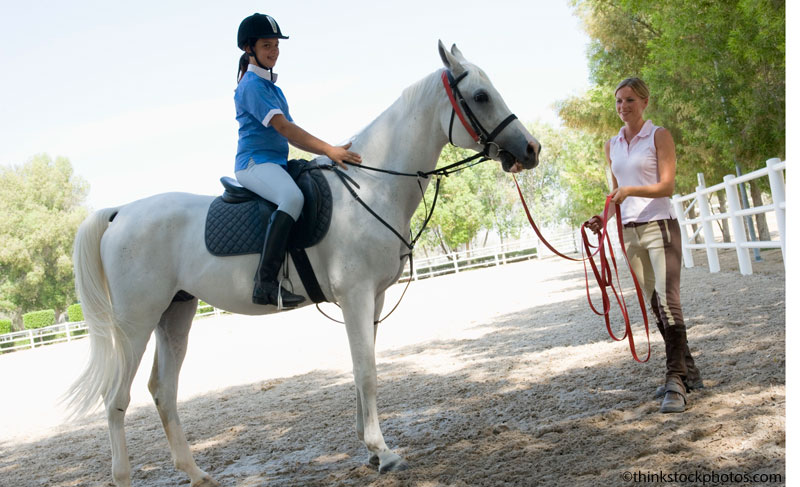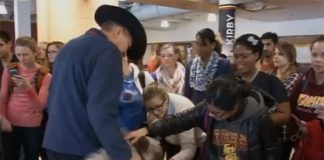Riding lessons, whether with an Olympic-caliber trainer or a local professional, can be a worthwhile investment in deepening your partnership with your horse. But in order to get the most bang for your riding-lesson buck, you’ll need to have clear goals in mind to which you can compare your progress.

The Big Picture
Many riders can pinpoint one large goal they would like accomplish, whether it’s something as monumental as “I want to jump a Grand Prix showjumping course” or something more basic like “I want my horse to be safe and quiet when on the trail.” But it can be harder to break that large goal down into bite-sized, easily attainable pieces.
It’s important to keep in mind that there is no linear path every horseman must follow to get a broke horse; instead, it’s up to each individual rider to determine what stepping stones are best for her and her horse to reach their end goal.
It’s also helpful to keep a sense of humor and realize that for every step forward, you and your horse might take one backward—and that’s OK. We might not all ride the next Roxy or Totilas, but there’s nothing wrong with endeavoring to make your horse the best he can be.
A United Front
As with any relationship, communication is key, especially with your trainer. Whether you take a lesson once a week or once a month, you and your trainer should be on the same page with what you want to accomplish, both for short- and long-term goals. A truly good trainer will also be able to tell you politely when your goals might be too lofty for your steed, or when you’re pushing a little too hard—or not hard enough.
End Goal
Your end goal is what you want your horse to be: your in-a-perfect-world, all-your-dreams-came-true horse. This perfect-for-you horse could be anything: an FEI-level dressage horse; a Training-level event horse; a 3-foot hunter; or a safe-for-my-kids trail horse.
No matter what a perfect horse is to you, make sure your trainer understands what type of horse you would like. You might have a horse with a lot of talent for dressage, but if your goal is to have a safe trail horse, your trainer needs to be on board with that.
Yearly Goals
These goals take into account larger elements, whether it’s teaching a horse specific movements (like lead changes or spins) or winning at a particular show. These yearly goals should change every year you own your horse.
Here too, riders need to be flexible. If you thought you were on track to compete in a 50-mile endurance ride and your horse can’t seem to catch his breath, you need to be able to shift your focus to a smaller, attainable goal.
Monthly Goals
Monthly goals are where keeping a riding journal comes in most handy. While entries need not be long, it’s helpful to know that earlier in the month your horse was sticky in his left-to-right changes or he kicked out when asked to lope. It’s easy to fall into the trap of not seeing progress, but when you can flip back through notes, you can take pride in knowing you’re getting there—even if progress is slow.
Weekly Goals
Many riders’ weekly goals come from “homework” given by an instructor during a lesson. These goals tend to be very specific and are easily measurable during the next week’s lesson. Your instructor will play a key role in assessing your riding week-to-week and will be able to give you important feedback in how your riding is going.
Daily Goals
It’s been said that you should never get on your horse without a set “thing” in mind to work on, such as perfectly shaped circles or an engaged hind end. These things are your daily goals. Sometimes your daily goal will be as simple as to enjoy one another’s company—and that’s a good goal, as well.
Liked this article? Here are others you’ll love:
Get the Most from Your Riding Lessons
10 Things Your Trainer Wants You to Know






Goals are great as long as one doesn’t set them too high and get disheartened.